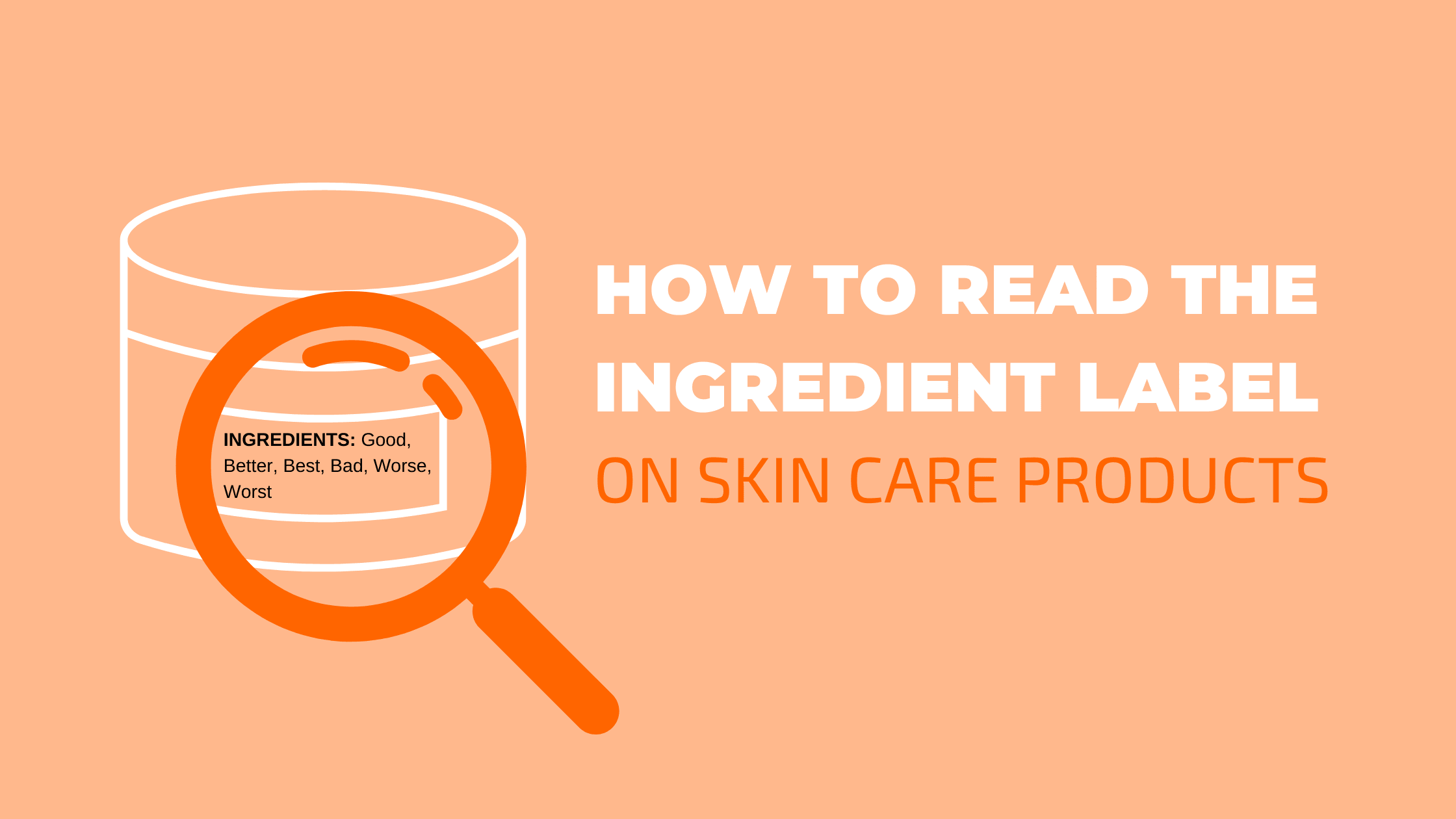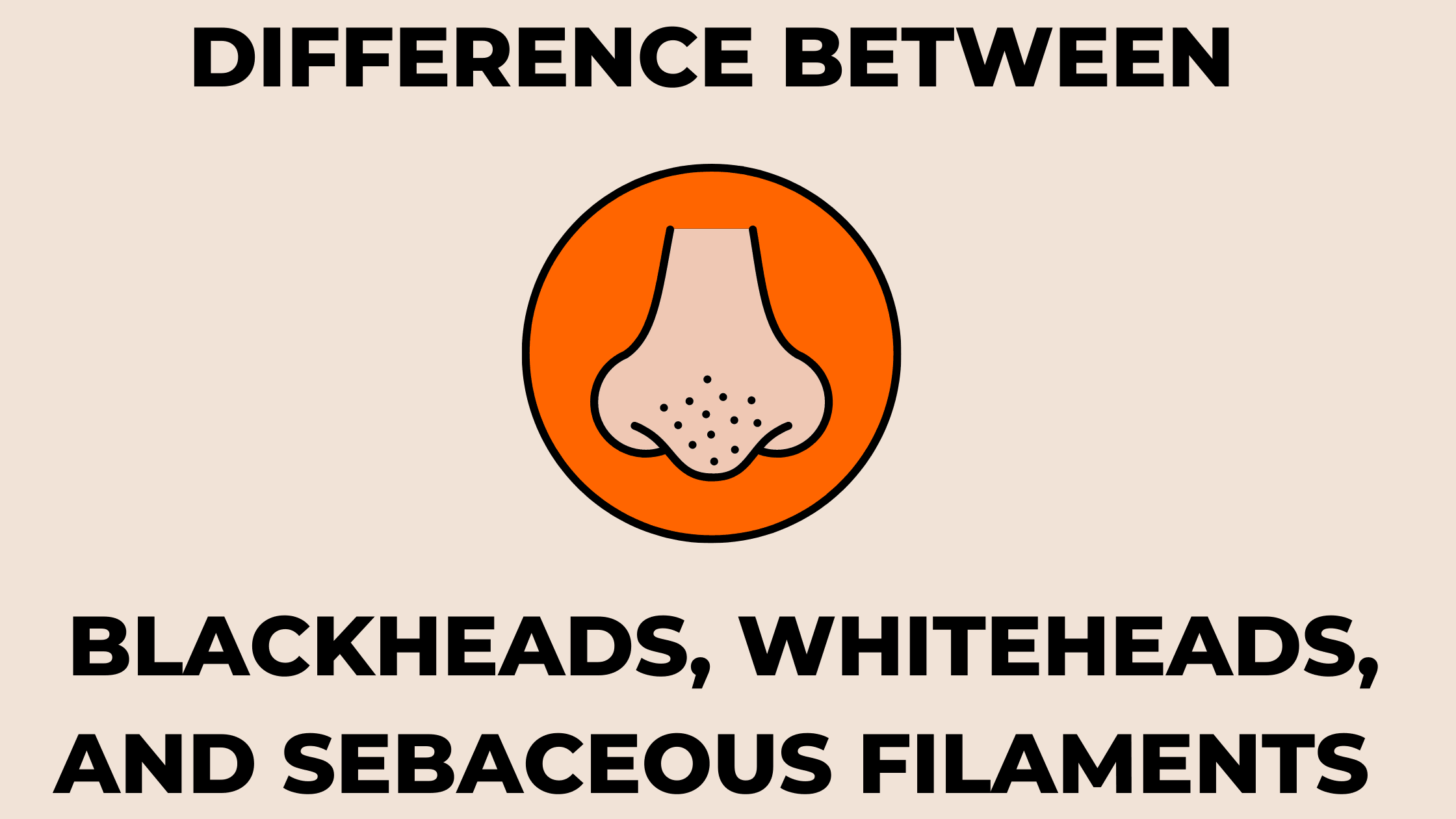
How to Read an Ingredient Label
Everyone’s skin is unique and has its own set of needs, so if you’re not a skin care expert, choosing the right skincare products for your skin type can be overwhelming. Since there’s so many different products that make bold claims about how they can save your skin, it can be hard to filter out what is true, and what’s just deception and clever marketing.
Developing a basic understanding of what common skin care ingredients do for your skin can help you sort through stacks of creams, serums, and cleansers to find the ones that will work the best for you. Obviously you won’t be able to grasp an understanding of the thousands of different skin care ingredients overnight, but there’s a couple tips and tricks to deciphering a skincare ingredient list.
Keep reading to learn how to read a skin care ingredient label, all about ingredient concentration, active and inactive ingredients, misleading names, and some common ingredients – both good and bad – to look out for.
Ingredient Concentrations
The Food and Drug Administration (FDA) requires cosmetic ingredients be listed in order of highest concentration to lowest concentration. Ingredients under a 1% concentration which can be listed in any order following the ingredients over 1%.
This means the first couple ingredients are the ones that make up the majority of the product, so they’re the ones you should pay the most attention to when breaking down product labels.
However, some ingredients like retinol work best in smaller concentrations, and can be irritating in higher concentrations, and others need to be high up on the ingredient list to work their magic. So just because a high quality ingredient is low down on the list, doesn’t mean you aren’t getting enough bang for your buck.
A rule of thumb you can use to gauge higher and lower concentrations in a product is the phenoxyethanol method. Phenoxyethanol is a common preservative in skin care products that is only approved for usage in doses of under 1%. If an ingredient is below phenoxyethanol, then it’s in a concentration of less than 1%, and if it’s above it is likely in a concentration greater than 1%.
Active vs Inactive Ingredients
Some ingredient labels have seperate sections labeled “Active Ingredients” and “Inactive Ingredients.” Active ingredients are approved by the FDA to perform a specific function such as titanium dioxide for sun protection or salicylic acid for acne reduction.
Products with active ingredients are considered over the counter drugs and are regulated by the FDA unlike most skin care products that only contain inactive ingredients, and so the labeling requirements are different.
These ingredients require the concentration percentage be labeled on the bottle, but also allows any inactive ingredients to be listed in alphabetical order as opposed to concentration order. Most brands will still list the inactive ingredients by concentration order, but keep that in mind when shopping for products like sunscreen and acne treatments.
Don’t Judge an ingredient by its name
Conscious consumers who take special care in avoiding products that could be harmful to their skin often subscribe to the method of avoiding any ingredients that they don’t immediately recognize. The greenwashing movement of personal care has fed into this immensely, and has instilled unnecessary fear in those who worry about their health. The truth is, skin care is a science, and just because an ingredient has a complicated, unpronounceable name does not mean it is dangerous.
Tocopherol Acetate may seem foreign, but it’s just another name for Vitamin E which has amazing benefits for your skin. Disodium Cocoamphodiacetate may be hard to pronounce, but it’s a gentle, naturally derived cleansing agent.
On the flip side, ingredients like essential oils are very recognizable, but are common irritants for sensitive skin. Citrus, eucalyptus, lavender, and peppermint oils are in most people's vocabulary, but they can lead to rashes, contact dermatitis, and other types of irritation.
We could go on for days about the complicated sounding ingredients that are amazing for your skin, but we'll spare you the details. If you ever see an ingredient in one of our products that you’re unsure about, check out our Ingredient Dictionary for simple explanations of what the ingredients in our products do.
We are constantly being conditioned to fear ingredients. It seems like every other day there’s a new ingredient blacklisted by natural skin care enthusiasts, but a lot of it is unsubstantiated. The key to ingredient literacy is to not make any assumptions based on the name alone, and taking the time to research and curate a vast knowledge pertaining to skincare ingredients. Luckily we have a whole blog for that so stick around and read a couple more!
Skin Care Ingredients to Avoid
There are some ingredients that dermatologists generally recommend staying away from. If you scan through a skincare ingredients label, and one or more of these ingredients are present, it’s probably best to put it back on the shelf.
- Fragrance
- Sodium Lauryl Sulfate
- Parabens
- Phthalates
- Propylene Glycol
- Color additives and dyes
Why you should avoid fragrance in skin care
Skin care products will often add fragrance to mask the scent of the other odorous ingredients or to add appeal, but what is fragrance in skin care products made of?
That's where things get tricky. Scented products will more often than not combine the ingredients they use to fragrance a product under the single label “Fragrance.” These ingredients can be from flowers, barks, leaves, essential oils, and a wide variety of other plant extracts, or from synthetically produced fragrance.
There’s no requirement to disclose the exact fragrance ingredients, so there could be anything in your skin care, even common allergens.
One common ingredient nested under fragrance is balsam of Peru which is one of the most common causes of allergic contact dermatitis. When diagnosed with a balsam of Peru allergy the first step is cutting all fragranced products out of your regimen since you’re unlikely to see it listed on a label verbatim. You can see how this lack of clarity leads to a lot of confusion for those with allergies.
It’s understandable that consumers would prefer a pleasant smell in a product applied so close to the nose, but if you have sensitive skin or allergies, fragranced products can easily trigger irritation. If you have sensitive skin or just want to know exactly what's in your skin care, fragrance free skin care products are the safest bet.
Read more about fragrance in skin care.
Sulfates: What is SLS?
Sulfates are detergents that create the lather in products like shampoo, toothpaste, cleanser, and other cleaning products. The most common sulfates found in personal care products are sodium lauryl sulfate (SLS) and sodium laureth sulfate (SLES).
Sulfates are very harsh on the skin and can lead to dryness and irritation, so it’s best to avoid sulfates or SLS in both skin care and hair care.
Some similarly named ingredients like Sodium Lauroyl Sarcosinate, Behentrimonium Methosulfate, and Sodium C14-16 Olefin Sulfonate are not the same thing, and don’t need to be exiled from your personal care products.
Different Types of Alcohol in Skin Care
Alcohol in skin care is typically shunned for its drying properties, but there are multiple types of alcohol, and not all of them are damaging to your skin. There are two main types of alcohol found in personal care products: simple alcohols and fatty alcohols. So what’s the difference?
Simple Alcohols
Simple alcohols are used to help other ingredients absorb into the skin better, but they are known to be incredibly drying. Small concentrations of simple alcohols are fine so if it falls towards the bottom of the label, there’s not much to worry about. But if any of the following ingredients are one of the first ones listed on the label, it’s probably best to leave it behind.
- Ethanol
- Alcohol denat
- Ethyl alcohol
- SD alcohol
- Isopropy alcohol
- Methanol
- Benzyl Alcohol
- Alcohol
Fatty Alcohols
On the flip side, there’s fatty alcohols which are used as emulsifiers to bind ingredients together in products. They are generally safe for the skin and have not been known to dry out the skin in the same way as simple alcohols. The following fatty alcohol ingredients may pop up in your skin care products, but they are nothing to be concerned about unless you have an allergy.
- Cetyl alcohol
- Cetearyl alcohol
- Stearyl or isostearyl alcohol
- Glycol
- Lauryl alcohol
- Glyceryl stearate
- Myristyl alcohol
Products are still allowed to be labeled “alcohol free” if they contain fatty alcohols but no simple alcohols.
Read more about the different types of alcohol in skin care.
Undisclosed Ingredients
The FDA prohibits mislabeling cosmetic products, but believe it or not, they do not require any premarket approval. While they can take action against mislabeled products, some brands may be able to fly under the radar, and avoid any legal action. This little loophole means that the ingredients on the label may not be exactly what they say. Yikes!
This is highly unlikely because the risks outweigh the reward for cosmetic companies when it comes to mislabeling products, but if you are wary, the best thing you can do is purchase from reputable trustworthy brands.
Conclusion
It's going to take some trial and error to get a feel for what ingredients work best for you. But now that you have a better understanding of the rules and regulations of cosmetics labeling, you can use this knowledge to avoid gimmicky and misleading products.
At Cleure, we are dedicated to ingredients with intention. Each product is carefully formulated by our team and our ingredients are verified as safe by the American Contact Dermatitis Society and Mayo Clinic. The ingredient labels on Cleure's products are guaranteed to be free of any type of irritating ingredients, and we are dedicated to full ingredient transparency. Try our line of fragrance free personal care products for sensitive skin.



Leave a comment
This site is protected by hCaptcha and the hCaptcha Privacy Policy and Terms of Service apply.